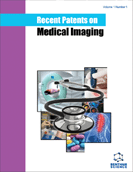Abstract
A new approach of metabolic event imaging (Metabolomics by Imaging or MR Imaging metabolomics) is proposed. Based on the review of patents, metabolites were identified and metabolite concentrations were measured by analysis of NMR peaks from localized in vivo magnetic resonance spectroscopy (MRS) and ex vivo NMR spectroscopy (NMR) data. To determine the clinical diagnostic value, metabolite concentrations (% fold peak change) were statistically analyzed and compared between diseased and normal tissues. Based on recent patents using NMR peak size, metabolite concentrations were correlated with excised normal human tissue water relaxation constants and tissue homogenate chemical contents. Tissue biochemical analysis combined with NMR peaks and MR spectroscopy data defines the ‘imaging metabolomics’ as a window to better tissue physiology details in different tissue regions.
Metabolites were measured using peak area, amplitude and molecular weights of metabolites in the reference solutions. In normal brain, heart, muscle and liver tissues in vivo MR spectroscopy peaks; normal brain, heart autopsy tissues and normal muscle, liver biopsy tissues ex vivo NMR peaks and spin-lattice (T1) and spin-spin (T2) relaxation times, were compared with diseased tissue NMR and MR spectroscopy data in meningioma brain, myocardial infarct heart, duchenemuscular- dystrophy muscle and diffused-liver-injury after respective in vivo proton MR spectroscopy was done. NMR data were correlated with tissue homogenate contents and serum levels of biochemical parameters.
The ‘metabolomic screening criteria’ for quantitation of smaller NMR visible metabolites was feasible in both ex vivo NMR and in vivo MR spectroscopy. Ex vivo 1H NMR and in vivo MRS metabolite characteristic peaks (disease/normal data represented as fold change), T1 and T2, and metabolites in tissue homogenate and serum indicated better physicochemical definition of muscle fibrosis in DMD, cardiac energy depletion in MI heart, neuronal dysfunction in meningioma brain MR and carbohydrate-lipid metabolic crisis in DLI liver tissues.
This report highlights the recent patents on biochemical-magnetic resonance correlation as basis of diagnostic magnetic resonance spectroscopic imaging or ‘imaging metabolomics criteria’ as interpretation of tissue physiology in disease in the light of new M R technical developments and nanotechnology.
Keywords: Clinical chemistry, diffused liver injury (DLI), Duchene Muscular Dystrophy (DMD), Metabolite NMR quantitation, metabolomic screening criteria, MR Imaging metabolomics, MR spectroscopy, neurochemical distribution, nuclear magnetic resonance, tissue metabolites.
 9
9

